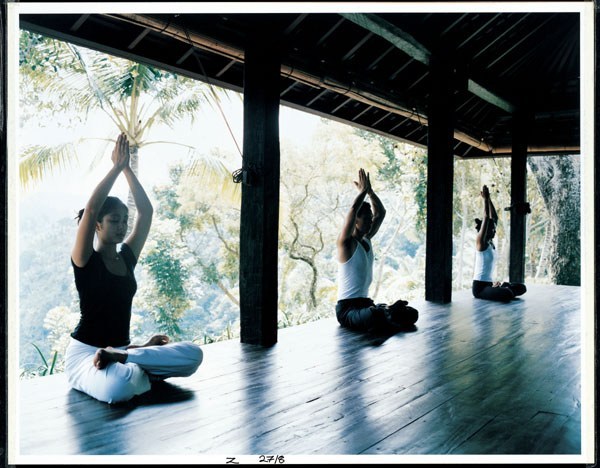That we now understand that people undertake pilgrimages for more than pious reasons has been one of the most significant advances in ‘pilgrimage studies’ to date. In Paulina Kolata’s interview with Prof. Ian Reader this is illustrated with a number of examples, though it is important to note that Reader shies away from a definition. For those who insist on the definition of terms this is a problem, of course, but I suspect the omission was deliberate. Among the reasons for this that are discussed is the notion that any term developed in one cultural-linguistic group will immediately face translation problems when being applied to another. Nonetheless, there is a tacit definition in use for the purposes of the interview which appears to be ‘travel connected to institutional religion’. The exception to this is ‘secular pilgrimage’ which Reader attaches to themes of popular culture, informal religious iconography and meanings, and, less obviously, questions of personal and collective meaning, all of which take place outside the jurisdiction of an institutional religious group. Questions of definition aside, there is an important theme Reader returns to a number of times throughout the interview; that pilgrims do a lot of stuff that is not ‘religious’ that scholars in religious studies have thus largely ignored.
In lieu of definitions, Reader asks questions about popularity and attraction, and, when prompted by Kolata, about meaning. By these routes a general picture of pilgrimage emerges. There are, Reader argues, certain conditions that must be met for a pilgrimage site to become successful and popular. Amongst these, infrastructure and marketing are important. Entertainment, Reader argues, has always been a part of religion and always a part of pilgrimage. In Western scholarship, however, there has been some kind of Protestant-informed unease with enjoyment when it comes to religiosity. This has given rise to a certain idea of pilgrims as serious travellers – a notion of pious, mobile flagellation in search of absolution – which contrasts with a domain of tourism in which entertainment is dominant and thus is frivolous and demanding of a scholarly shun (Digance 2006). But this dichotomy, Reader notes, is not present in many other traditions around the world. Furthermore, regardless of scholarly dismissal, pilgrimage sites are often places of entertainment – food, performances, conviviality, sex – regardless of culture or dominant religious group, and this is an important part of what attracts people. The reasons people might go on what they call ‘a pilgrimage’ are complex. Amusement may be as important as communion, escape from everyday life as important as prayer. But, and this is an important point that does not come up in the interview, they may not be the reasons a person may give when asked by fieldworking scholars. This is where a question asked by Kolata about the meaning of pilgrimage practices brings Reader to the heart of the interview’s thesis. Common themes in pilgrimage traditions, Reader infers, are metaphors of the journey of life, and, simultaneously, an escape from the realities of that life.
Reader’s argument is compelling and raises some important and intriguing questions. In my own work on spiritual tourism (Norman 2011) the themes he highlights were no less common,[1] and I too emphasise the importance of looking at the whole picture of a travel site or tradition in order to triangulate data and draw reliable conclusions. The working model Reader suggests is one that understands pilgrimages as travel to religious sites in which the motivations of travellers are a mixture of piety, curiosity, escape, boredom, transformation, and any number of other ‘non-religious’ and ‘religious’ reasons. The point, as noted in the interview, is that traditions of travel, apart from anything else, have probably always been, in part, about getting away from home and seeing something new, satisfying some human urge for mobility, to explore, to see new things, and to learn. In addition, popularity is also a factor as people desire to go where others also go. This is complicated by Reader’s assertion that piety is not a prerequisite for pilgrimage, though this, of course, depends on who one asks. Even a cursory examination of the historical record of pilgrimage traditions in Europe illustrates that pilgrims have always been suspicious of the peregrinatory status of other pilgrims. The overall point, however, is that from the outside, pilgrimage traditions are those traditions of travel in which meaning and/or transformation are portrayed as important, but that in practice hang in tension with other equally important, though less acknowledged motivations and desires.
For my current work, this notion has some important implications. At present I am working on the qualitative analysis of interview material gathered as part of the Shamatha Project, examining the effects of an intensive three-month shamatha meditation training retreat. If people have gone on pilgrimage to sites they consider special (as Taves 2012, would put it), but, as Reader contends, also in order to escape the everyday, to seek entertainment, and to ‘go to popular sites’, then in the phenomenon of people in Western societies going on Buddhist meditation retreats, we ought to be able to find evidence of those other ‘non-religious’ factors. At least somewhere and somehow. This, of course, assumes we are willing to consider ‘retreat tourism’ or ‘contemplative tourism’, as I’m going to neologise it here, in the same light as the range of vastly different traditions of travel that we are otherwise happy to lump under the ‘pilgrimage’ label. And I am, as are others (Eddy 2012), because if we look at some of the sociological studies of retreats and their touristic dimensions we can find some evidence of just such complex approaches (e.g. Voigt et al. 2010). An important implication is that, far from being simply about a journey towards truth, or of transformation or progression towards enlightenment or mindfulness, retreat practices in the West will also be about escape from the everyday, about seeing somewhere new, learning, and, overall, about being something different from normal for the retreatant/traveller/pilgrim.
Of course, the first step in testing the model Reader puts forward (albeit somewhat tacitly) is rigorous, qualitative research that investigates the interplay of expressed motivations, outcomes, and actual practices. I am confident enough in Reader’s model, especially in the light of my own research on spiritual tourism and on World Youth Day (2011), to predict that a complex mix of contesting interests held in tension is what will be found, at least in Western meditation retreat contexts. Certainly if we look at some examples of successful and popular retreats, like Spirit Rock Meditation Centre in California, we find the signs Reader predicts: good infrastructure, coordinated marketing, catering for many tastes and approaches, escape from the everyday, social gatherings apart from the practice, and so on. As opposed to undermining the special status of retreat practices, research showing such observations would, in fact, emphasise the sociological importance of retreat experiences for retreatants. Retreat visits/pilgrimages often are, by design, by intent, and in practice, journeys of significance for a range of personal and social reasons. But we cannot turn our eyes from the supposedly non-sacred, hedonistic, entertaining, aesthetically pleasing, or to put it simply, the enjoyable dimensions of retreats. For many who enter a retreat, just as for those who go on other pilgrimages, the journey is a special tradition of travel, a journey redolent with meaning, precisely because it occurs in response to complex personal and social motivations that are held in tension.
References
Digance, Justine. “Religious and Secular Pilgrimage: Journeys Redolent with Meaning.” In Tourism, Religion and Spiritual Journeys, edited by Dallen J. Timothy and Daniel H. Olsen, 36–48. London: Routledge, 2006.
Eddy, Glenys. “The Vipassana Retreat Experience: A Consideration of the Meditation Retreat as a Religious Paradigm of Travel.” Literature & Aesthetics 22, no. 1 (2012). http://ojs-prod.library.usyd.edu.au/index.php/LA/article/view/7574.
Norman, Alex. Spiritual Tourism: Travel and Religious Practice in Western Society. London: Continuum, 2011.
Norman, Alex, and Mark Johnson. “World Youth Day: The Creation of a Modern Pilgrimage Event for Evangelical Intent.” Journal of Contemporary Religion 26, no. 3 (2011): 371–85.
Taves, Ann. “Special Things as Building Blocks of Religions.” In The Cambridge Companion to Religious Studies, edited by Robert A. Orsi, 58–83. Cambridge: Cambridge University Press, 2012.
Voigt, Cornelia, Gary Howat, and Graham Brown. “Hedonic and Eudaimonic Experiences among Wellness Tourists: An Exploratory Enquiry.” Annals of Leisure Research 13, no. 3 (January 1, 2010): 541–62. doi:10.1080/11745398.2010.9686862.
[1] I’ll put aside my wish to respond to Reader’s dismissal of ‘spirituality’ apart from noting the ironic similarity it bears to the dismissal of dimensions of pilgrimage he had just been discussing.



